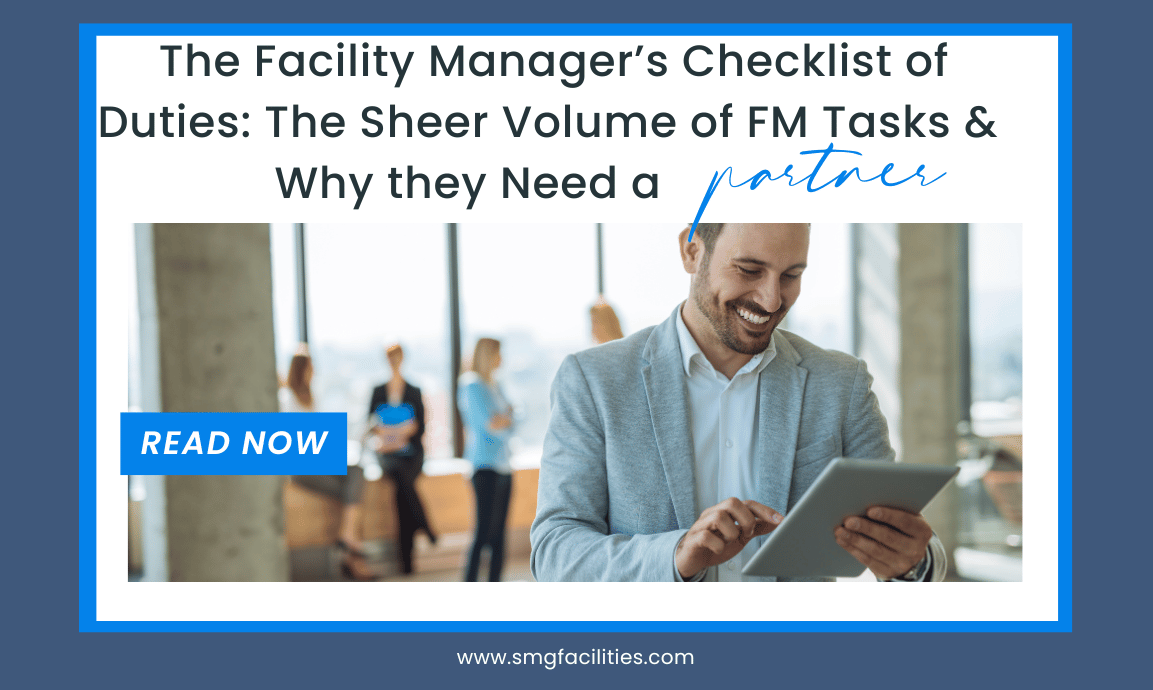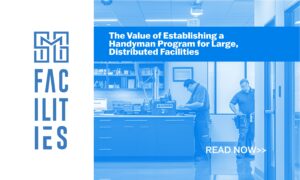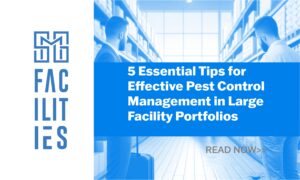Throughout the day facility managers must look over their facilities manager’s checklist of duties and walk around the inside and outside of facilities. Keeping track of the FM tasks with a checklist ensures nothing is missed during the inspection and keeps everything planned out. But that’s even more complex in the post-COVID world.
As explained by Dan Hounsell of FacilitiesNet, “Entryways, restrooms, classrooms and offices have been upgraded in many buildings as maintenance and engineering managers seek to prevent transmission of the coronavirus. And procedures for housekeeping and moving around in facilities have changed with the same goal in mind.
Given all this, it’d be easy for managers to get overwhelmed as they gauge the impact of the pandemic on their departments’ short- and long-term activities.”
Facility managers have an overwhelming amount of tasks to do, especially for only one person to handle. Due to all the tasks needed to be done, outsourcing facilities management can provide increased efficiency throughout the day-to-day tasks while mitigating risk. The following checklist shows the countless facility manager responsibilities that get checked on a daily basis.
The Facility Manager’s Checklist of Duties
Plan and coordinate proper installations, facility upgrades and overall asset maintenance for both employees and customers, including:
- Plumbing: check for signs of leaks, corrosion, water spots. Check the water pressure and the water heater. Test all drains to ensure no clogs. Perform backflow tests to prevent water from flowing backward.
- Electricity: Check for proper wiring installations and that the wires are still secured. Ensure fittings fit properly and have no corrosion.
- HVAC Units: Make sure facilities receive proper airflow, clean or replace drains, lines, coils, and air filters. Check refrigerant levels, and inspect wires, capacitors, and thermostats’ condition.
- Elevators: Check the doors open and close properly, look for signs of damage on handrails, the ceiling, and walls. Check for and replace burned-out lights, including the control panel.
- Security systems: Check the control panel, all cameras. Also checking the locks on doors and windows for safety.
- Fire equipment: Checking the fire extinguishers should be on, proper weight and pressure of the refillable containers.
- Amenities and appliances
- Observe for property damage
- Pest control
- Specialty cleaning
- Locks
- Drywall and paint
- Carpentry
- Lighting
- Renovations
- Expansions
- Building projects
- Coordinate office relocations
- Oversee payment for utilities
- Workstations (computers, phones, etc)
- Refurbishments
Facilities managers must also handle the upkeep of equipment and supplies to meet workplace health and safety standards:
- Inspect structures to determine the need for repairs and innovations (must be done weekly, monthly, semi-annually, and annually.)
- Handle service contracts to ensure proper upkeep
- Ensure all exits are clearly marked and have additional signage if needed.
- Test smoke and carbon monoxide detectors
- Ensure stairs and railing are not loose
- Conduct routine pest inspections and treatments
- Review security system function and management.
- Coordinate with facilities maintenance to resolve support tickets
They further supervise all facilities staff and external contractors to ensure compliance with company policies and to coordinate such activity in a transparent, accountable way across:
- On-site staff
- Remote workers
- Visiting partners
- Custodians
- Technicians
- Groundskeepers
Facilities managers also control and oversee projects and accommodations within facilities.
- Parking space allocation
- Ensure walking areas clear of debris
- Pull or treat weeds
- Water plants
- Clean debris from the roof and gutters.
- Cover soil with an inch-thick layer of mulch
- Fertilize as needed
- Water lawn thoroughly
- Dethatch lawn as needed
- Inspect cables of exterior lights as well as screws and other hardware
- Ensure all bulbs that contain mercury or lead are safely stored
- Inspect all light fixtures at regular intervals
- Ensure globes, refractors, and reflectors are clean
- Check transformers, control gear, and accessories of luminaires
- Inspect electrical connections and boxes for overheating
- Make sure the electrical panel is accessible
- Replace fuses as needed
- Check if the automatic and manual switches work properly
- Clean the exhaust fans if needed and make sure they work properly
- Clean and oil overcurrent devices
- Check conditions of cover plates for cracks and proper tightness
- Test outlets for proper operation
- Check all fusible switch units to make sure that all the fuses are from the same manufacturer and are of the same class and rating
- Apply bearing lubrication once a year on domestic water booster and circulation pump systems
- Make sure adequate hot and cold running water is available for all sinks and tubs
- Check drain connections to the sanitary sewer
- Make sure the low water shut-off works properly
- Ensure motors and ductwork are clean
- Check screws, latches, and gaskets in need of repair or replacement
- Check the condition of all electrical hardware as well as connections
- Check operation of inter
- Check the conditions of sidewalks and parking lots for potholes
- Check decks and patios for rot or loose railings, the possibility of nail sticking out, and any debris
- Observe grounds needs
- Walk around the entire building
- Remove trash buildup
- Look for damaged or defective doors
- Clean and mop floors
- Check the building for metal corrosion
- Assess the flat portion of your roof for punctures, cracks, and blisters
- Assess the sloped portion of your roof for deformed edges, buckled shingles, metal corrosion, curling, and granule loss on the shingles
- Inspect chimney and vents
- Look at the ceilings inside your facilities and check for cracks, water stains, and water leaks
- Offsite surveillance is used by monitor cameras
- Ensure procedures are in place in the case of an accident or vehicle damage
- Check all locks and knobs on doors to ensure they work properly
- Add a non-oily lubricant to any windows or doors that are sliding or sticking
- Monitor snow piles and create a plan to remove them if it begins to pose a hazardous obstacle
- Check for cracks and inefficiencies in your heating systems
- Clean damper operations
- Ensure any mineral buildup inside the water heater is minimized
- Drain boiler to remove any accumulated sediment
- Clean or replace boiler’s oil filter once a month
- Ensure the thermostat is calibrated correctly
- Ensure chemicals are disposed of according to instructions
- Determine if first-aid kits are well-stocked and placed properly
- Check and clean the respirators
- Check fire alarm system
- Check the conditions of fire escapes
- In the colder months, check exposed and exterior pipes for signs of freezing
- When it snows, ensure the roof is clear of high-piling snow
- De-ice sidewalks and walkways to avoid slips and falls as needed
- Check that all areas of the parking lot are well lit
- Replace bulbs where necessary
- Check light fixtures for dead bulbs or damage
- Check and test the fire strobe lights
- Check the emergency exit signs and ensure they light when tested
- Update and enforce safety policies
- Update or create an emergency response plan
- Ensuring compliance with industry and government safety regulations
- Properly handling emergencies when they arise
- Waste disposal
- Building security inside and outside the facility
- Move management
Of course, they must also allocate office space according to needs. Explore new decking layouts and space utilization strategies based on feedback from company executives and department heads. They also have the responsibilities to keep financial and non-financial records of space- and workforce-related costs to better understand true overhead and inform future workplace decisions, considering:
- Total building capacity
- Square footage of workspace
- Space Utilization
- Utilization depends on the type of space.
- Peak utilization of the space at each facility.
- Cost per head of employee
Why Outsourcing Streamlines Facilities Management Responsibilities
Companies may outsource their facility manager responsibilities for a variety of different reasons, but no matter the reason, outsourcing can provide a variety of solutions. With all the tasks a facility manager has to do, outsourcing can provide innovations and enhancements to make some of the tasks easier. An example of a beneficial enhancement due to outsourcing can be robotic cleaning and improvements in monitoring of everyday assets, such as the lighting system.
The use of more advanced technology and digital systems for FM tasks can provide increased efficiency throughout the facility to help build productivity among team members and create better customer experiences. Simply by looking at the facilities manager’s checklist of duties above, facility managers have enough on their plate already. Working with a facility management service provider can make that checklist easier to manage and let your team focus on high-priority needs.
In addition to the upper hand of new technology through outsourcing, companies can also get assistance with unplanned maintenance. Outsourcing with a provider can allow companies to schedule repairs through a maintenance program and avoid the run-until-it-breaks mindset.
A maintenance program can decrease the interruptions that constant repairs cause the business and avoid their impact to customers. Additionally, as more and more companies continue to focus on environmentally friendly initiatives, outsourcing can make eco-friendly changes easier to achieve. A few changes can include eco-cleaners, avoiding waste, pushing recycling more, and reducing energy usage. The list of possible benefits is almost limitless too.
Increase Productivity and Boost Efficiency Among Your Team by Partnering With SMG Facility Services
As many tasks as a facility manager has to do, outsourcing with a proven facility management service provider is clearly the best option. That step toward outsourcing puts experience, people and technology at the heart of your facility management goals. That all occurs without diverting the attention from the high-priority needs of each facility. To see the benefits of working with the best outsourcing facility management service provider, contact SMG Facility Services for your business today.

